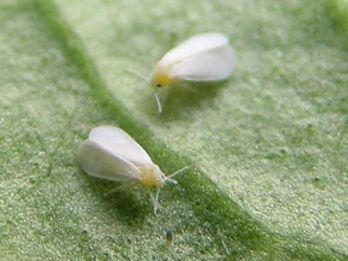Whitefly
Ash whitefly (Siphoninus phillyeae) and greenhouse whitefly (Trialeurodes vaporariorum) are pests affecting different tree species, depending on the season.
Background
These 2 species have separate hosts, which is useful in differentiating whitefly as they are close in appearance.
Favoured fruits for ash whitefly in spring, summer and autumn are the deciduous ash, pear, apple, and pomegranate. When these trees lose their leaves in autumn, swarms of adult whiteflies move to their winter hosts of citrus, olive, and photinia trees.
Impacts
Ash whitefly reproduces rapidly during the warmer months, with up to 3 generations per season that sometimes overlap. Development is slow in winter, with little occurring below 10°C. However, the same overwintering population leads to large infestations early in the season.
The ash whitefly is a nuisance in urban areas and is often inhaled by pedestrians. Its 'honeydew' is seen covering vehicles and other outdoor amenities. Another indicator of their presence is increased ant and European wasp activity, as these insects seek honeydew.
Identification
The common greenhouse whitefly and ash whitefly are both winged white insects of 1 to 2mm.
They are selectively mobile, preferring to remain sedentary on the underside of the host’s leaves. When disturbed, both species form dense clouds around the host.
Lifecycle
The ash whitefly lifecycle has 3 post-egg phases. The adults deposit their eggs on the underside of the leaf – there is no evidence that it can develop on fruit. These hatch into nymphs and go through 4 instars, or moult phases. The nymphs eventually change into pupae, which remain fixed to a single position until adults emerge.
Greenhouse whitefly females are capable of mating less than 24 hours after emergence, and often lay their eggs on the undersides of leaves. Eggs are pale yellow in colour, before turning grey prior to hatching.
Newly hatched larvae, known as crawlers, are the only mobile immature life stage. During the first and second larval instars, they are pale yellow or translucent and flat scale, which is difficult to distinguish with the naked eye. During the fourth and final immature stage as pupa, they have compound eyes and body tissues become visible as the larvae thicken and rise from the leaf surface.

